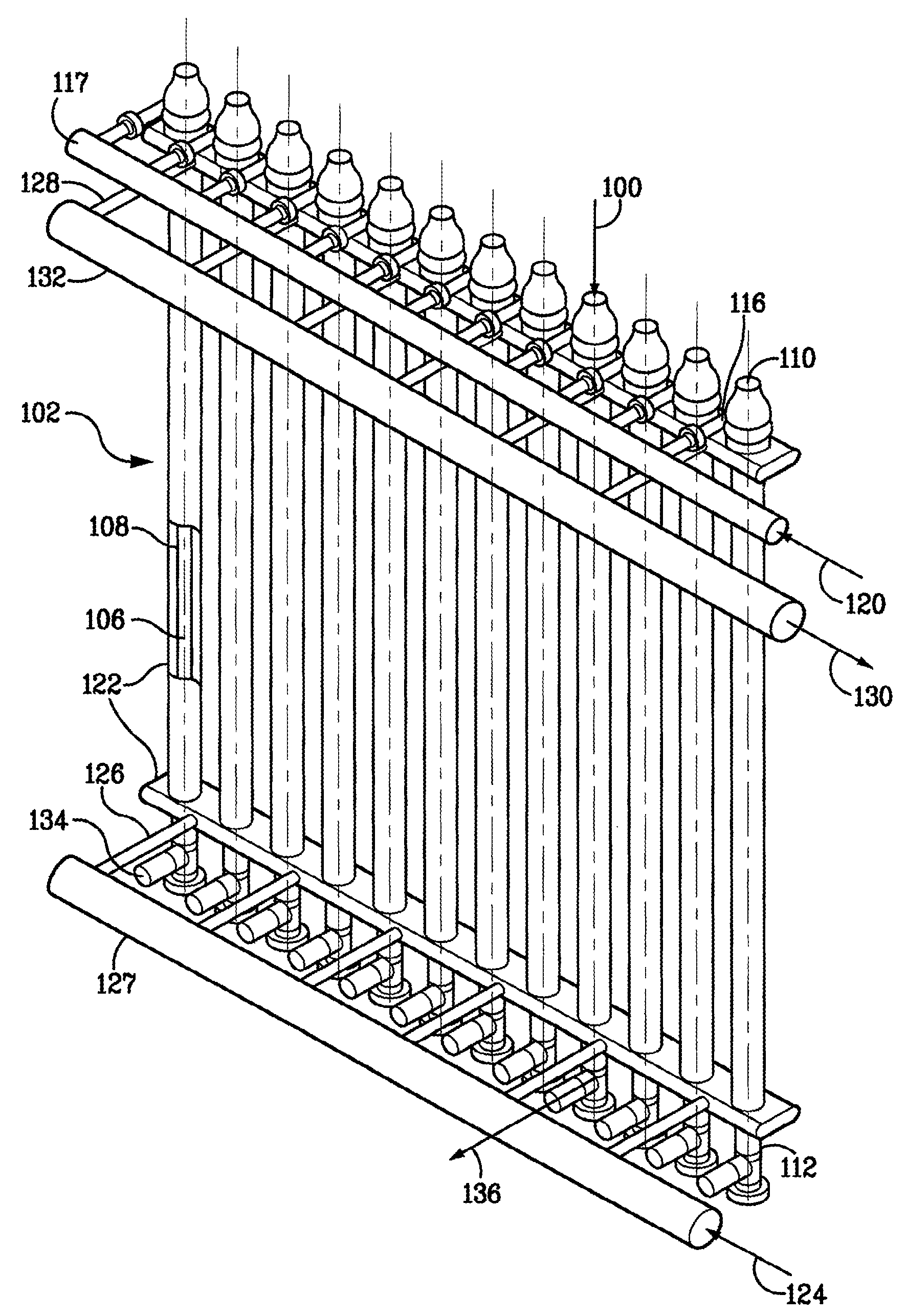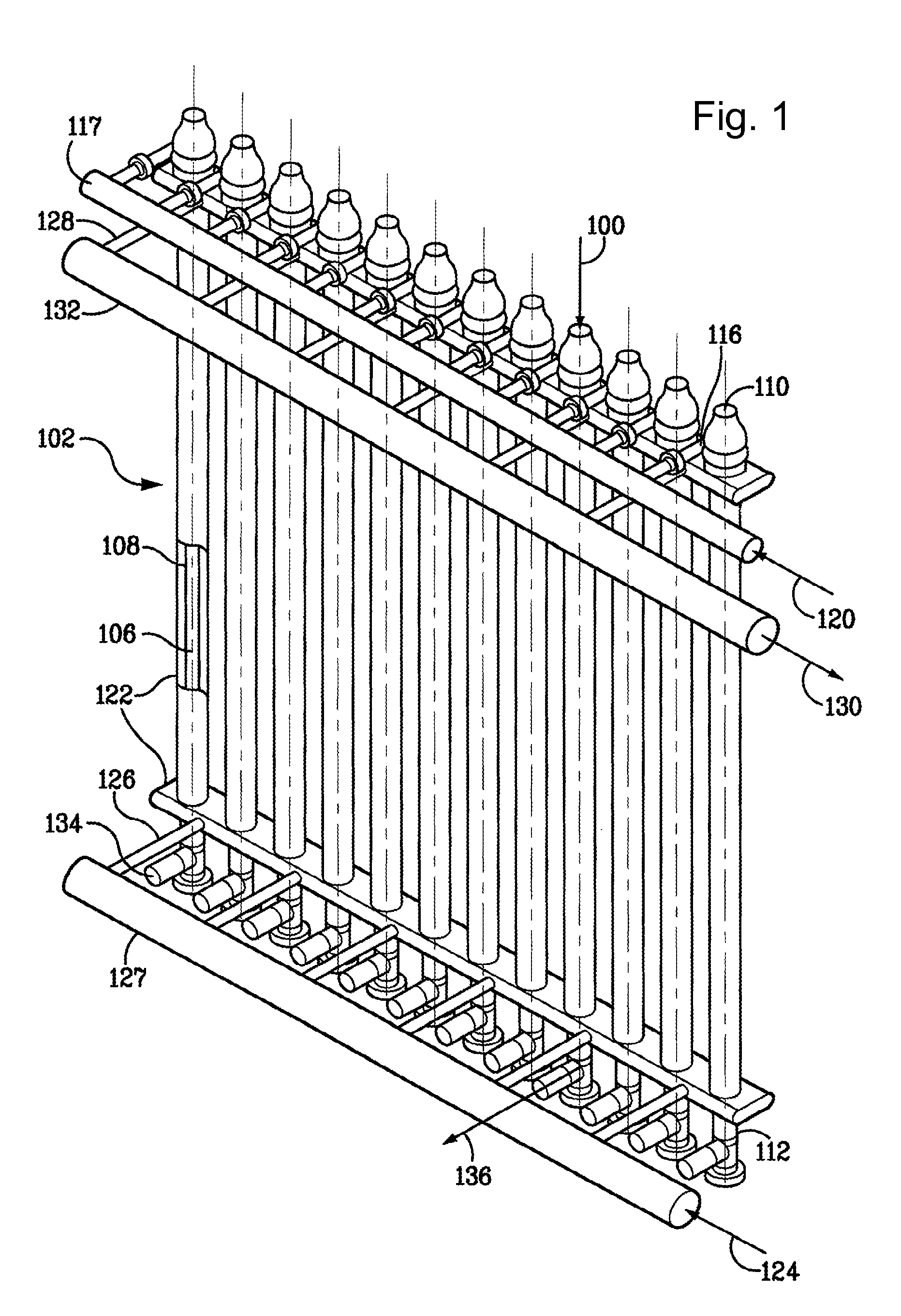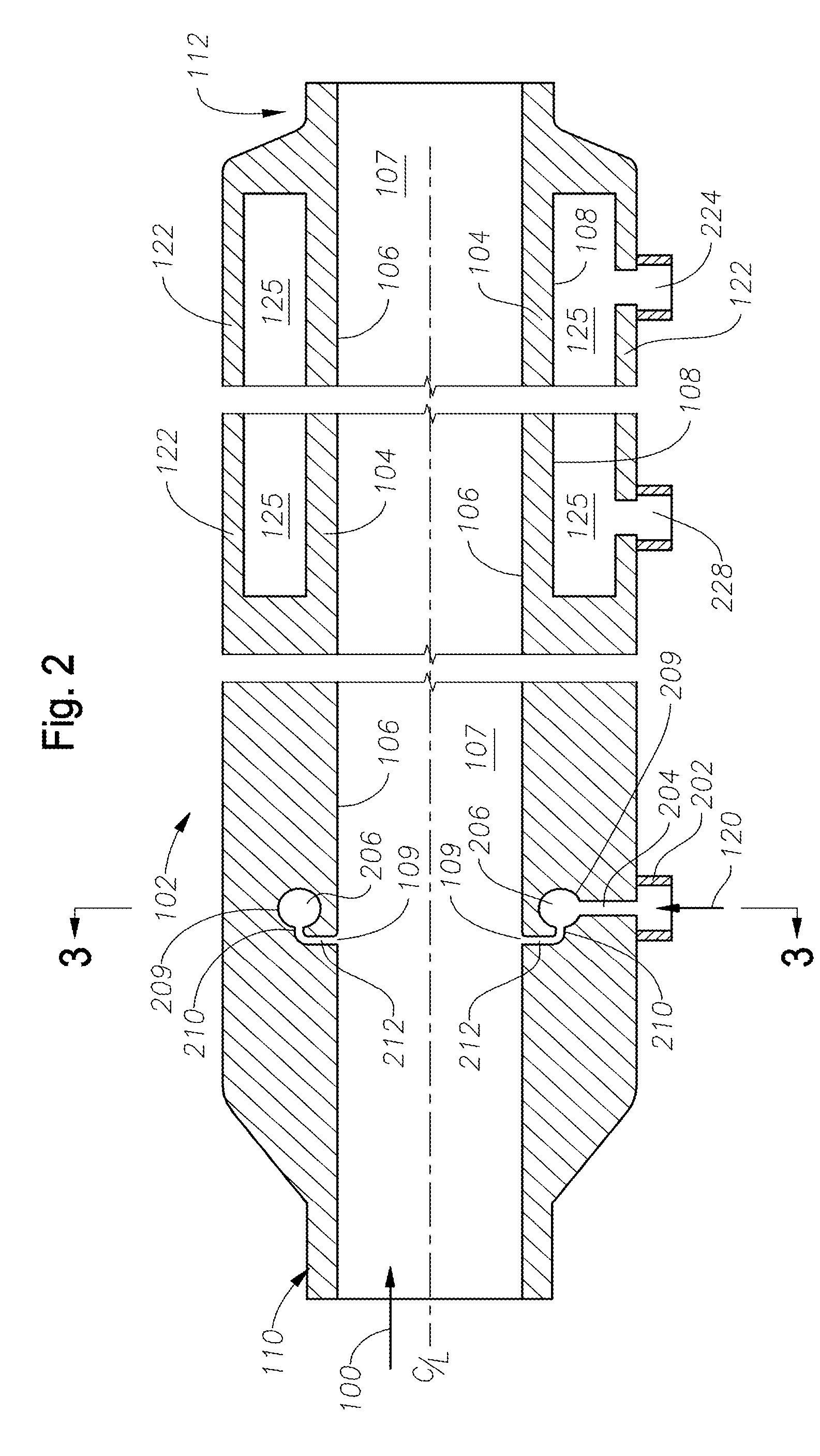Quenching effluent streams from cracked heavy hydrocarbon feed presents special challenges to prevent deposition of
tar (including
tar-precursors and other heavy components) and related
fouling problems within the quench equipment.
Below the
stream dew point, steam cracked
tar condenses from the effluent
stream and the
fouling tendency may be relatively high, particularly at and immediately downstream of the location where the
dew-point is reached.
In this regime, the heaviest components in the stream condense but remain hot enough to remain reactive and sustain
dehydrogenation and
polymerization reactions, undesirably forming higher molecular weight tar molecules.
Furthermore, this material adheres to surfaces and continues to polymerize, dehydrogenate, thermally degrade, and harden, thus making it difficult to remove.
Significant drawbacks to such direct-quench systems are the high required direct quench
fluid injection volume and the corresponding high separation and treatment volumes and costs.
On commercial sized crackers, this can result in undesirably large circulation pumps,
pipe work, cost, and
energy consumption.
Further, due to the difficulty in controlling the physical dispersion of the injected quench fluid within the cracked effluent stream and equipment process surfaces, not only are large amounts of quench fluid used, but the introduction systems also may utilize inertial dispersion, spraying, or some other type of voluminous and energetic introduction method to attempt adequate dispersion and mixing to directly quench the cracked effluent stream.
An additional and serious operation problem with dispersion fittings is the propensity of the small openings in the nozzles to plug with
polymer and
coke particles.
The art has desired production of a wetted wall indirect
heat exchanger quench process but has had difficulty actually achieving a commercially effective and efficient process or apparatus.
The difficulty, however, has been in affecting comprehensive
heat exchanger wall film coverage over the full circumference and length of the exchanger in the presence of a shearing, hot, gaseous effluent flow.
Not only has the problem been difficult to achieve, it has been even more difficult to do so efficiently.
The known indirect heat exchange quench systems that attempt to utilize a wetted wall process are inefficient and commercially deficient for the intended purpose, requiring introduction of undesirably excessive amounts of quench fluid.
Also, under actual operating conditions and manufacturing variations, the severe temperature differences of the various components, heat stresses, and repeated heating and cooling cycles create difficulties in creating and maintaining a uniform film coverage and thickness.
The
operational effectiveness of such design tends to be subject to equipment alignment and manufacturing variances and also requires excessive quench fluid flow rates to overcome the deficiencies.
The '420 design also requires additional components and complexity, such as a baffle and introduction of an
inert gas in a purge
gas chamber.
Differential movement and
distortion between the abutting sections of the
injector can adversely affect the quench oil injection pattern and is not effective for quench to feed
mass ratios of less than about 2.0.
Again however, this process also requires use of an inefficiently large quantity of combined quench fluid, as the liquid quench fluid is introduced into the bore along with a direct quench fluid into the same bore that conveys the gaseous effluent.
Further, the apparatus of the '908 patent possesses areas along the quench tube bore that are subject to
fouling tar build-up, including the tube areas opposite the locations of introduction of the liquid quench fluid.
To distribute quench fluid to other slots requires introduction of an inefficient volume of quench fluid and disproportionate distribution of quench fluid on the bore circumference.
The annular, multiple introduction slot arrangement fails to adequately control distribution of quench fluid about the full length of the annular cavity, by permitting excessive introduction nearest the quench fluid source with dissipating rates through the length of the annular cavity.
Also, as with many of the preceding designs, the tangential quench fluid introduction ports are also inefficiently designed, creating discontinuous fluid introduction into the bore, leading to areas of foulant formation.
Further, the fluid inlet ports are positioned to direct quench fluid directly at a few of the inlet slots, further contributing to inefficient performance.
However, quench fluid introduction systems such as disclosed in the '424 patent and others listed above that introduce the quench fluid directly into the effluent conduit from a
single point or from a discrete number of points require an inefficient volume of quench fluid.
Also, computer modeling has demonstrated that separated phase flow patterns or regimes tend to establish along the flow path as the volume of quench fluid is reduced to desirably efficient levels, requiring use of an inefficient volume of fluid to obtain suitable surface coverage over the full length of the TLE.
Also, quench introduction fittings tend to be sized to operate around a target flow range and if the effluent flow diverges out of this flow range, then the fitting is either inefficiently over-sized or under-sized.
To avoid these issues, such systems tend to require introduction of an excessive volume of quench fluid to overcome the non-uniformity and dispersional inefficiencies.
This tends to result in substantial portions of the introduced quench fluid inefficiently not encountering and not protecting the inner process wall.
The prior art demonstrates that the processes and apparatus for introducing a wall-
wetting quench fluid via the known quench fittings and processes have efficiency shortcomings and often produce less than optimal quench results.
 Login to View More
Login to View More 


